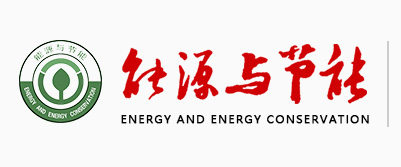202312
甘孜传统民居采暖能耗与碳排放影响因素分析
张妍1,罗茂辉2
(1.成都大学建筑与土木工程学院,四川 成都 610106;2.同济大学机械与能源工程学院,上海 200092)
摘要: 以川西高原甘孜州传统民居为模拟对象,通过DesignBuilder 对其能耗进行模拟,对比分析现存典型民居有无
阳光间的采暖能耗和以石材、加草黏土、夯实黏土、加气混凝土、轻砂浆砌筑黏土砖砌体5 种材料为主体的不同围护结
构袁以及4 种不同外墙保温材料在不同的厚度下对当地民居采暖能耗、碳排放、经济成本等方面的影响。结果表明:
4 种保温材料中能耗最小的是挤塑聚苯乙烯泡沫塑料,能耗最大的是聚氯乙烯硬泡沫塑料;对于保温材料厚度,4 种保
温材料厚度在150 mm 时达到最佳能耗表现,同种类型保温材料随着模拟厚度的增加,能耗逐渐减小;在5 种围护结构
材料中,加草黏土作为一种就地取材、成本低、性能优良的绿色建筑材料,其采暖能耗和碳排放综合性能明显优于其余
者,可制作成加草黏土砖用于民居外墙建造袁进行推广。
关键词: 川西高原;传统民居;采暖能耗;碳排放;经济成本
中图分类号: TU18 文献标志码: A 文章编号: 2095-0802-(2023)12-0005-05
Influencing Factors of Heating Energy Consumption and Carbon Emission of
Traditional Dwellings in Ganzi Prefecture
ZHANG Yan1, LUO Maohui2
(1. School of Architecture and Civil Engineering, Chengdu University, Chengdu 610106, Sichuan, China; 2. School of
Mechanical Engineering, Tongji University, Shanghai 200092, China)
Abstract: Taking the traditional dwellings in Ganzi Prefecture of Western Sichuan Plateau as the simulation object, the energy
consumption was simulated by DesignBuilder, and the heating energy consumption of the existing typical dwellings with or without
sunroom, the effects of different envelope structures with stone, grass-added clay, compacted clay, aerated concrete and light mortar
masonry clay brick masonry as the main body, and the effects of four different external wall insulation materials on the heating
energy consumption, carbon emissions and economic costs of local dwellings at different thicknesses were compared and analyzed.
The results show that the material with minimum energy consumption in the four insulation materials is extruded polystyrene foam,
and the maximum energy consumption material is polyvinyl chloride rigid foam plastic; for the thickness of the insulation material,
the four insulation materials achieve the best energy consumption performance at 150 mm, with the increase of the simulated
thickness, the energy consumption of the same type of insulation material gradually decreases; among the five kinds of building
envelope materials, grass-added clay is a kind of green building material with local materials, low cost and excellent performance,
and its comprehensive performance of heating energy consumption and carbon emission is obviously better than that of the rest,
which can be made into grass-added clay bricks for the construction of residential exterior walls for promotion.
Key words: Western Sichuan Plateau; traditional dwelling; heating energy consumption; carbon emission; economic cost


